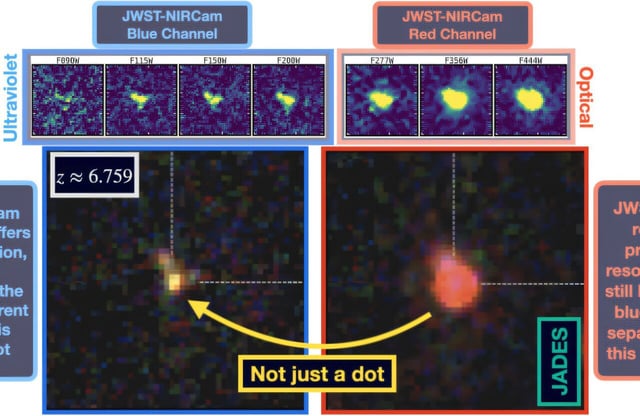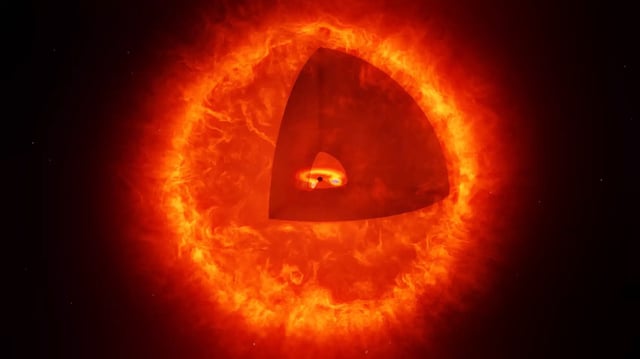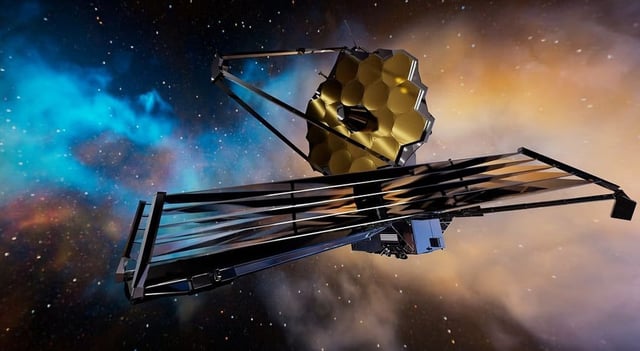Overview
- An analysis of 99 Little Red Dots finds about 30% show clumpy ultraviolet structure, contrasting with their point-like infrared appearance.
- Spectra for a subset reveal gas moving at thousands of kilometers per second, providing direct fingerprints of active galactic nuclei.
- The population appears heterogeneous, with some sources powered by growing black holes and others dominated by star formation, possibly triggered by interactions or mergers.
- Separately, a single extreme source nicknamed the Cliff shows a sharp Balmer break–like jump in brightness that motivated a proposed “black hole star” model.
- Both results remain provisional, and teams plan deeper JWST spectroscopy and complementary observations to confirm classifications and probe early black hole growth.



